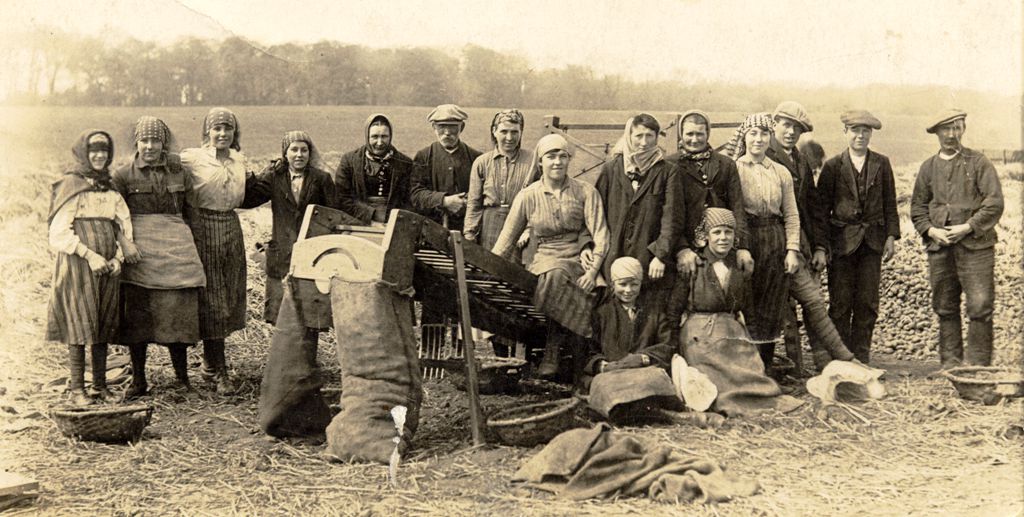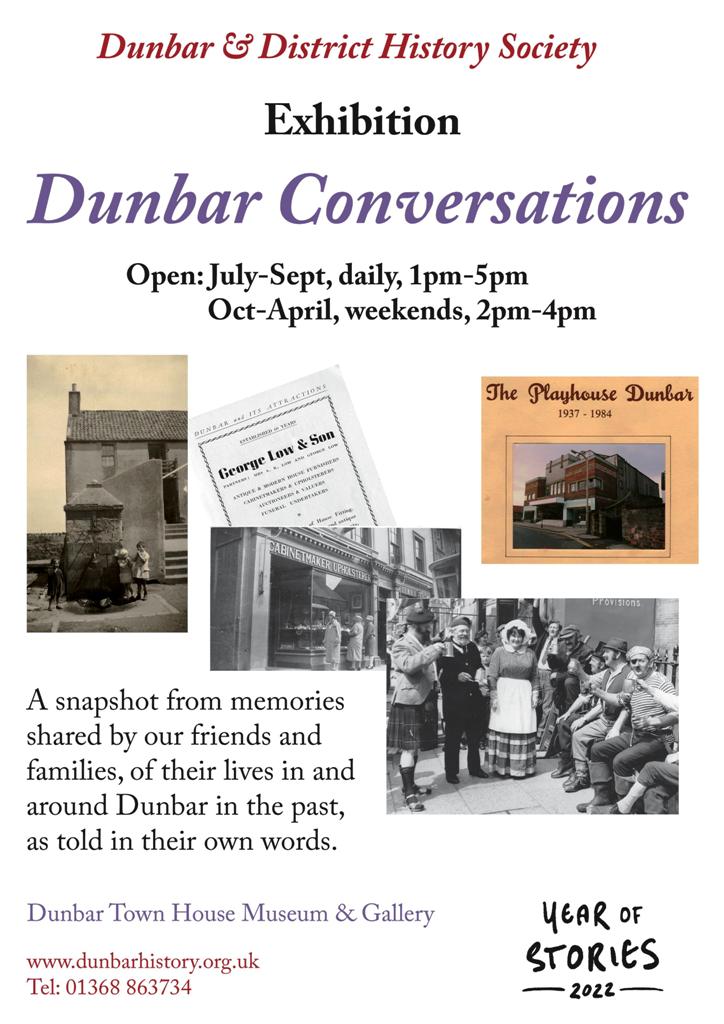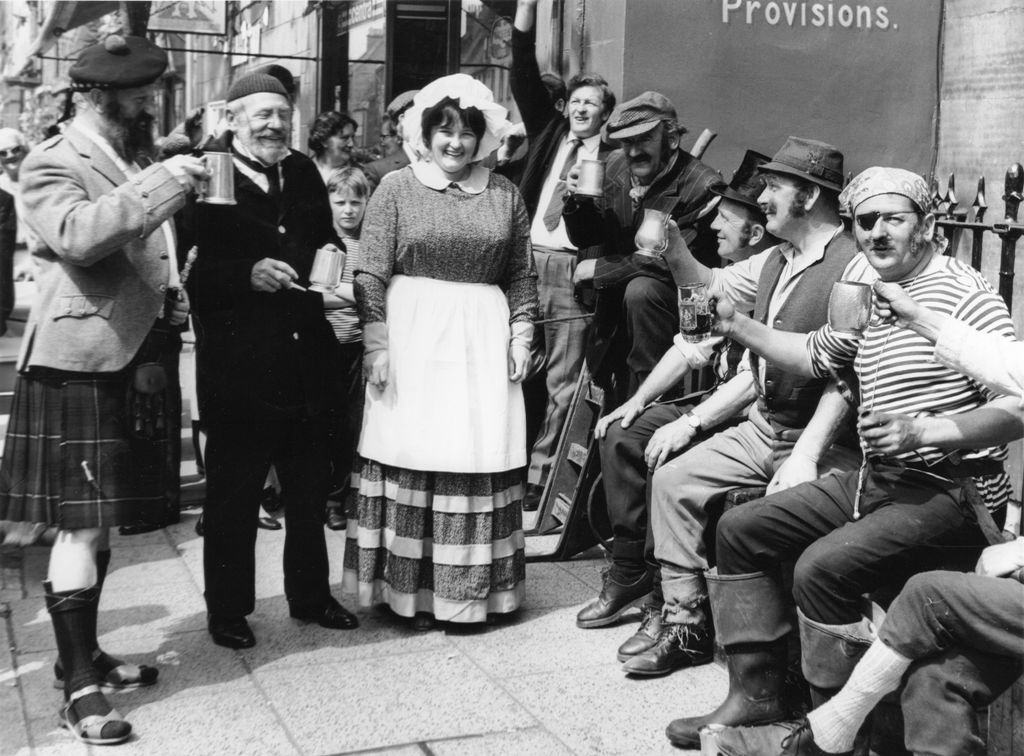Another exhibition this month, this time one of our own. Dunbar Conversations, an exhibition researched, created and curated by Pauline Smeed is now on in the Town House History Society room.
Pauline’s introduction reads “This is just a snapshot from the memories shared by our friends and families of their lives in and around Dunbar in the past, told in their own words. We are always pleased to receive further memories, or photographs of Dunbar in the past, to add to our collection and to be shared with both the people of Dunbar and visitors to our town”. Below are some examples from this fascinating and well-worth visiting exhibition. Text with photos by Pauline Smeed and additional information and links by Jim Herring.
If you enlarge the photo, you will see that the exhibition covers a wide range of topics and eras from Dunbar’s history, the difference this time being that each photo is accompanied by a quote from an interview by someone who lived in Dunbar at the time.
The photo above shows families working on the land at potato harvest time. These workers, from the early 20th century, would have been selected by a farmer at a hiring fair. The caption reads “You stood on the street there and the old farmer would come up and say ‘Are you for hire?’ ‘Yes’. An’ then he would ask was he going to be a ploughman or an orraman and then ‘what about the laddies?’. ‘Oh and how much money per week are ye wantin’ and such like. An’ you stayed on the farm you were on until the 28th May and they would send a couple of horses and carts fo the furniture”. An orraman was a farm labourer who did a variety of jobs and were lower in the farm hierarchy than ploughmen.
Hiring fairs were common across Scotland from the 19th century and you can read more about them in this article. Many people in Dunbar have ancestors who worked on East Lothian farms and remember hiring fairs in detail. For the farmers, this was a chance to inspect potential employees, and while this was an opportunity to get work for farm servants (later farm workers), it was nevertheless an undignified experience for families who had to stand as a group while the father negotiated with the farmer about wages and accommodation (tied houses). The John Gray Centre (good photos) also has a range of information and photos about hiring fairs.
Text with photo “A wonderful week. We had already had our yearly civic weeks but this was extra special. The ox roasting in Lauderdale Park was great fun and tasted good too. Lots of dances, parades and floats, fancy dresses were wonderful to see. Dunbar pulled out all the stops”. The fancy dress participants are enjoying a drink outside the St George Hotel, with the side of A T Smith’s shop in the background. You can read a potted history of civic week by Stephen Bunyan here. The East Lothian Courier had photos of the 1970 event – see here.
The photo above is the well on Darwell Brae, now Victoria Street, which was used by people living near the harbour. The caption with this photo is “On washing day afore we went to school, my brother Tucker and I had to fill their tubs and their baths for my mother. And you had to go in the house, you had to go down a dozen steps. We were going back to school after the holidays and my mother used to get the big bath and tubs in front of the fire and us schoolbairns were bathed there. My brother Tucker and me and my sister. Happy days”. The well is still to be seen on Victoria Street. The British Listed Buildings site has a contemporary photo of the well and it is described as Well-Head, a Category C listed building. The site describes it as “18th century. Squat pillar form with pyramidal top. Squared red sandstone rubble. Iron pump handle (disconnected from supply)”. Also in the details is “The well will have served Cat’s Row, a legendary tenement (demolished in 1933)”. You can see the well and Cat’s Row in this painting by May Brown RSW here.




You must be logged in to post a comment.